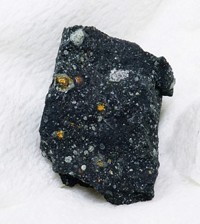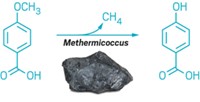Advertisement
Grab your lab coat. Let's get started
Welcome!
Welcome!
Create an account below to get 6 C&EN articles per month, receive newsletters and more - all free.
It seems this is your first time logging in online. Please enter the following information to continue.
As an ACS member you automatically get access to this site. All we need is few more details to create your reading experience.
Not you? Sign in with a different account.
Not you? Sign in with a different account.
ERROR 1
ERROR 1
ERROR 2
ERROR 2
ERROR 2
ERROR 2
ERROR 2
Password and Confirm password must match.
If you have an ACS member number, please enter it here so we can link this account to your membership. (optional)
ERROR 2
ACS values your privacy. By submitting your information, you are gaining access to C&EN and subscribing to our weekly newsletter. We use the information you provide to make your reading experience better, and we will never sell your data to third party members.
Environment
Biomolecule breakdown is inorganic
May 15, 2006
| A version of this story appeared in
Volume 84, Issue 20
After organisms die, their biomolecules decompose and end up on ocean floors and integrated into sediments, where they can eventually become oil and natural gas. It's long been thought that microbial processes could be responsible for the initial transformations of biomolecules such as β-carotene, steroids, and terpenoids into biomarker compounds such as carotane, phytane, and steranes. But now, researchers show that abiotic processes may in fact be responsible. Yanek Hebting, now a postdoc at MIT, and colleagues at Louis Pasteur University in Strasbourg and ETH Zurich, studied a number of reduced carotenoids in samples of sediment from Lake Cadagno in Switzerland. They found that the reductions were not stereospecific, and therefore, not biologically produced (Science, published online May 11, dx.doi.org/10.1126/science.1128966). Rather, inorganic H2S, produced by bacterial sulfate reduction, is likely responsible for reducing the biomolecules, a hypothesis strengthened by the group's laboratory experiments.





Join the conversation
Contact the reporter
Submit a Letter to the Editor for publication
Engage with us on Twitter